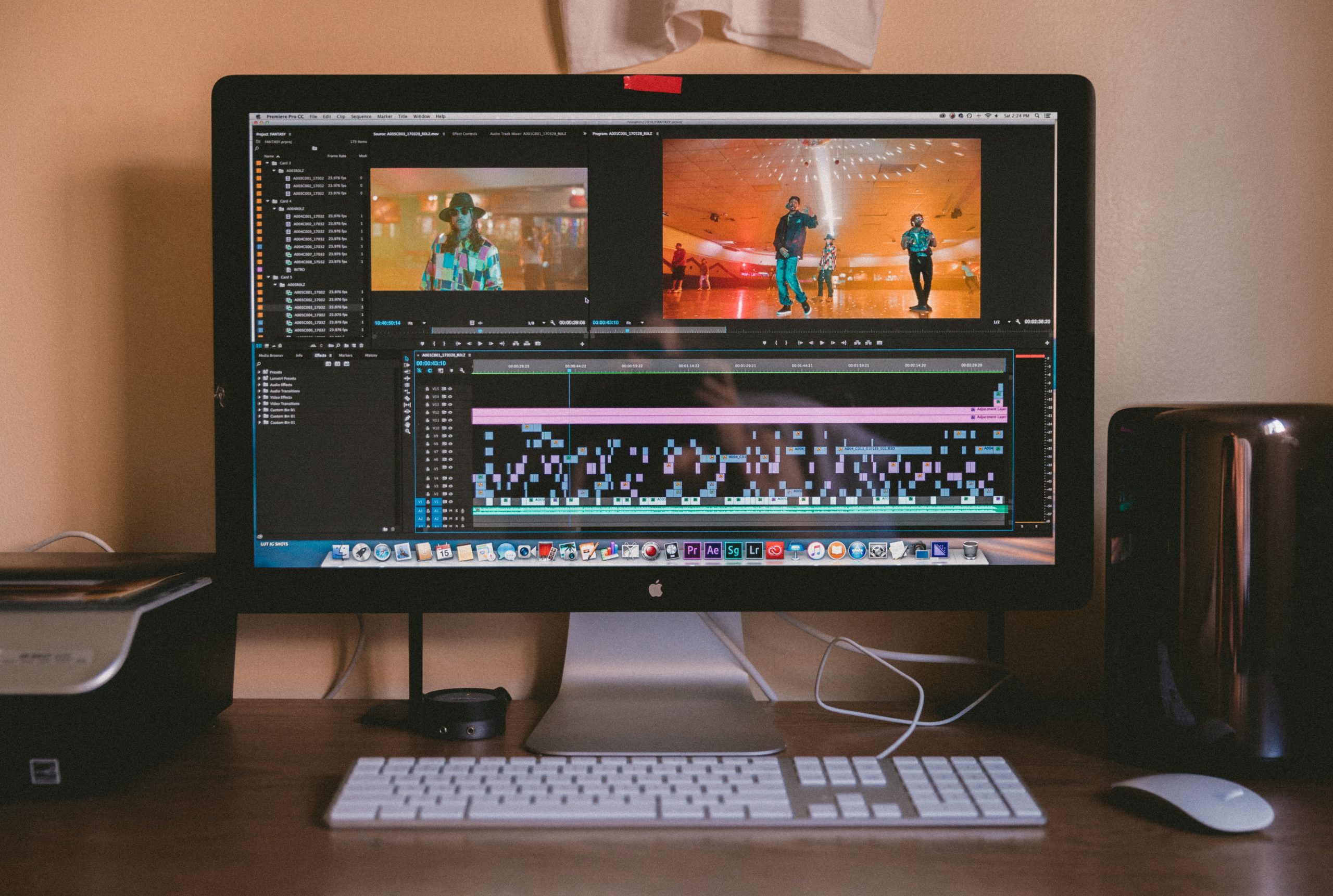8
Video Checklist
|
Most are probably familiar with using videos to supplement and support instruction and if you aren’t, you are certainly missing out. Videos can be simple, sustainable, accessible and when created correctly, help provide additional context and clarity to the course. Videos can be watched asynchronously before or after class. Asynchronous videos are beneficial because they can be stopped, paused, and re-watched to help students learn at their own pace. In all cases, videos should be accessible to accommodate all types of learners. Video content should include text-based alternatives so that all users can access the information. Video captions provide access to the hearing impaired as well as English language learners, and those with cognitive and learning impairments.
| Tip: Captions help all learners. According to an article on Quality Matters in a survey of television viewers, it was found that 80% of the people who used captions did not have a hearing impairment (Crawford, 2021). |
In higher ed, the majority of students use captions even if they are not hearing impaired (Edelberg, 2019). Learners watch videos with captions in environments where they cannot play the sound at full capacity or in noisy rooms. They also watch it to learn vocabulary, decipher thick accents, and compensate for poor audio quality. Captions also help learners keep track of the narration, which can motivate them to watch the video in its entirety. Most importantly, video captions lower cognitive load (Kim & Kim, 2020). For the student who prefers not to use captions, they can easily toggle them off.

Dos and Don’ts of video creation
Captions are text blocks in a video that display all the audio information. This information includes spoken words, sounds, and music. Subtitles are similar to captions, but they only display the spoken words and can be turned off. They usually display a language that is different than the one spoken. In captions, the text always displays either two or three lines at a time, depending on the timing of the speakers. The captions appear as the people in the video are talking and are timed appropriately. Captions are usually formatted at the bottom of the screen since it is less obtrusive to the visuals.
Some programs will allow you to change the formatting of the position, the font, the size, and the color of captions. Most importantly, captions can be edited for accuracy. When I review captions for accuracy, I listen to the audio while reading the captions paying close attention to punctuation, spelling, and grammar. If there is more than one person speaking, I review to make sure the speaker is labeled correctly if it is not apparent in the audio. If you used an accurate captioning service for your video, you can upload SRT (SubRip Subtitle) or VTT (Video Web Text Tracks) file. SRT is the most common text-based subtitle/caption file format. You can upload both file types to YouTube and Vimeo, among other places, to ensure accurate captions. Other file types are used in varying capacities include SBV, MPSUB, LRC, CAP, SAMI, RT, and TTML. Some video creation software allows you to order and create captions as part of the program, but it is important to check and edit for accuracy. Also, now several programs like Google Meet and Zoom use live transcription, which is extremely helpful, although not entirely accurate.
| Yes, many people who aren’t deaf/HoH (hard of hearing) use captions. Still, they don’t depend on them as deaf/HoH folks do. Deaf/HoH folks watch hours of captioned videos. By comparison, testers only spend a few minutes. They won’t be tortured if the readability isn’t as good as it could be.
– Meryl Evans, A11y expert, Speaker, Author, Digital marketer |
Hiring a service to produce accurate captions can benefit your institution and learners. Obviously, the more accurate they are, the better. You also want to consider the experience for the hearing impaired. They want to know who is speaking, pausing, laughing, and sighing. We want to include these elements for a full-range multi-media experience with captions.
Captioning Services
| Live (human) captioning is an active and engaging two-way communication process. I become a trusted partner in the clients’/students’ learning process. They are entrusting me with their content to transcribe what I hear and convey it to them with utmost accuracy and integrity. Part of my role includes being as prepared as possible and familiarizing myself with terms and concepts in advance of the class or event. This stage may include requesting prep material, asking questions about the class or event ahead of time, and updating my PAL (personal abbreviation list), something that only humans can do at this point. On the technical side, human transcription provides proper grammar and punctuation, speaker identifiers, and environmental and background sounds such as [Laughing] [Music] [Crosstalk]. Correct grammar and punctuation cannot be overemphasized enough, especially for emerging readers. Viewing accurate language conventions should reinforce proper usage for the learners in their own writing. ASR (automatic speech recognition) is certainly improving in capturing words, but it has a long way to go to indicate if something is a question, quote, or exclamation. I’ve seen students grow tremendously as a result of having captions. They become more interested, focused, participatory, and confident. They no longer experience FOMO (fear of missing out) because they know they have access to the same information as their classmates or peers. With a human transcriber on the other side, learners can interact as needed, ask for clarification, and receive a transcript which they can use as a study guide or learning tool.
-Diana Lerner, M.S, Co-founder & Chief Communications Officer Empire Caption Solutions |
While WCAG (The Web Content Accessibility Guidelines) does not yet dictate legal requirements for making online video accessible in the United States, their guidance is often followed by educational institutions and businesses as a best practice and has been referenced by laws in several European countries. WCAG 2.0 generally asks that online content meet principles that improve accessibility for people with disabilities and also adhere to a certain level of compliance.
Online videos with a WCAG level AA compliance level are the following:
- Level A: Captions are provided for all prerecorded audio content in synchronized media, except when the media is a media alternative for text and is clearly labeled as such.
- Level AA: In addition to Level A compliance, captions are provided for all live audio content in synchronized media.
You can read more about creating accessible video captions online by searching on W3.org for media captions
Blinking text and animations
Blinking text and animations can cause problems for people with seizures. In HTML, the blink tag no longer works because it is considered harmful. It is not recommended and has been removed from web standards. According to the Centers for Disease Control and Prevention (2020), 4.3 million American adults have epilepsy, which is a brain disorder that can cause seizures. Seizures can be triggered by photic or pattern-sensitive design and it occurs when epileptic patients see a series of images or videos that fall into a certain range of color patterns and frequencies (Centers for Disease Control and Prevention, 2020). When possible, use a seizure safe profile that can eliminate flashing while reducing color in general. A seizure-safe profile setting enables epileptic learners to view courses with less risk of seizures from blinking text and unsafe color combinations.
WCAG Level A success criteria suggest three flashes or below are suitable to prevent seizures. In other words, there should not be anything that contains flashing more than three times in a one-second period of time. Not only do learners with photosensitive seizure disorders become at risk if the frequency of the flashing is too high, but many are particularly triggered by the color red when flashing. You can learn more about flashing animation success criteria by searching on W3.org for “seizure does not violate”.
Don’t overload the video with too much stimulation

Minimize cognitive load. Videos should not be overly cluttered with special effects, animations, or distracting images. According to (Halarewich, 2016) viewers can only process a limited amount of information at once. Sensory overload can cause barriers to learning and should be avoided.
Do not present dense information through narration at the same time as an energetic music cue. Mayer’s Coherence Principle suggests that people learn better when the design takes a minimalist approach and avoids any extraneous images, graphic elements, videos, or sounds. A common mistake instructional designers make is to so add non-related background music, sound effects, and graphics. Even if you think these elements are interesting, and they may be, if they don’t support the learning or help with knowledge creation, extraneous components actually hinder learning. We have all been on a website trying to read an article when we are bombarded by randomly placed advertisements in the form of blinking web banners, intrusive pop-ups, and flashing videos. It can be so annoying to engage in this kind of reading that we often leave the website before we finish the article. Flashing extraneous material and sound effects can erect serious barriers for learners, especially the neurodiverse. We must pay careful attention to how we craft our materials. We should not have sound effects, loud music, and speaking all at once. Sound effects when done well can help learners understand if they accomplished a goal. For example, they may give a correct answer in a quiz, but sound effects during an animation may cause too much stimulation and turn learners off.
Be sure to set the timing on slower settings. Animated gifs are notorious for moving too quickly. When using video allow users to control the pace of the video to one that works best for them. Allow videos to be sped up, slowed down, or skipped entirely. Avoid the bells and whistles for the sake of showing off your special effect skills. Just because you can use Adobe Premiere, After Effects, or whatever new video editing program is out there, that doesn’t mean that you should add multiple animated text titles flying in and out of the page. Also, be sure to be consistent, use fonts that are readable, and avoid overlapping text unless there is a strong contrast. Images should complement the text and help to process the material, not distract from it. Basic, simple, and easy to understand text will help learners. Long winding sentences and flowery language will inhibit learning.
In the typography section, we will talk about font choice, but readability is key. When a video, website, or page is too cluttered, it overloads the user and makes it difficult for them to navigate the content. Take a ride on the way back machine to look up what websites looked like 20 years ago. You will find web 1.0 was jarring on the eyes, hard to read, and overloaded with content. With decades of research on cognitive load, there is no choice but to continue to improve our designs, accessibility, and usability for our students and stakeholders.
Suggested guided questions/projects to assess your understanding of video:
|
